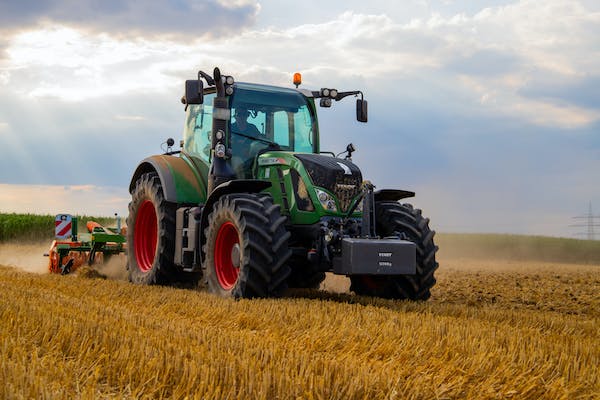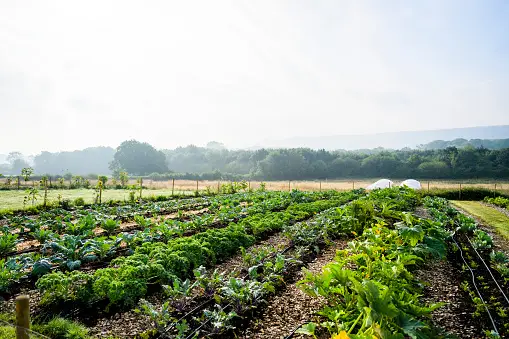Okra flourishes in warm climate and is traditionally grown in the southern U.S., although there are varieties for northern growers, too. as soon as it’s harvest season, pick out the pods each day so it doesn’t get overripe and tough. See how to plant, grow, and harvest okra.
Many gardeners are discovering okra, and the variety of this warm-climate crop has been creeping northward and gaining in reputation. This plant no longer best grows fit for human consumption vegetables and delightful flora, however it is also rich in diet A and coffee in calories, which makes it a wonderful addition in your food plan.
If you take a look at the flower of okra, you’ll see a resemblance to a hibiscus flower. It’s no coincidence okra is a member of the hibiscus circle of relatives!
Planting
Okra needs full sun and hot weather with evening temperatures which can be in the 60s (Fahrenheit) or hotter. Soil desires to be fertile and nicely-drained neutral pH of 6.5 to 7.0. before planting, blend aged manure and/or compost into the soil.
When to Plant Okra
Sow okra at once into the garden three to four weeks before the remaining spring frost date and cover the plants with a 2- to 3-foot-excessive cold frame or grow tunnel till the weather warms up absolutely. ensure that the covering is that this high so that plant life have room to grow. Or, to direct sow okra seeds without any safety from the bloodless, wait until the soil is 65° to 75°.
In which summers are short, mainly in greater northern areas, start okra seeds interior in peat pots beneath complete light 3 to 4 weeks earlier than the ultimate spring frost.
Plant okra seeds approximately 1/2 to one inch deep and 12 to 18 inches aside in a row. you could soak the seeds in a single day in tepid water to help accelerate germination.
In case you are planting okra transplants, make certain to area them 1 to two toes apart to offer them sufficient room to develop.
Okra flowers are tall, so area out the rows 3 to four toes apart.
Developing
Cast off weeds when the vegetation are younger, then mulch heavily—4 to 8 inches to save you more weeds.
facet-get dressed the plant life with 10-10-10, elderly manure, or rich compost (half pound in keeping with 25 feet of row). you may also practice a balanced liquid fertilizer month-to-month. keep away from too much nitrogen, which deters flowering and encourages leafy growth. analyze greater approximately soil amendments and getting ready soil for planting.
When the seedlings are about 3 inches tall, thin the flowers so that they’re 18 to 24 inches apart.
maintain the plants properly watered throughout the summer months. One inch of water consistent with week is right, but use more in case you are in a hot, arid place.
Excessive heat can sluggish the boom of okra
Prune the tops of okra flora when they attain five to 6 toes tall. this can result in greater side branches. Prune those as wanted.
In heat regions, some growers reduce vegetation to approximately 2 feet while productiveness slows in summer season. The vegetation develop returned and convey some other crop of okra.
Okra has large, bushy leaves, in addition to tiny spines on its pods, both of which may also cause pores and skin infection; recollect carrying gloves and/or long sleeves when coping with. “Spineless” types have pods that don’t gift this trouble. irrespective of kind, irritation does now not arise while you consume okra.
Recommended Varieties
General varieties can pinnacle eight feet or more! Dwarf sorts, which seldom exceed 5 ft in top, are satisfactory for bins.
‘Blondy’: spineless; dwarf at three ft tall; light inexperienced 3-inch pods; perfect for northern growers
‘Burgundy’: abundant 6- to eight-inch pods (harvest at three inches) on 3- to five-foot-tall vegetation; fit to be eaten ornamental, with deep red stem, branches, leaf ribs, and fruit
‘Cajun Jewel’: dwarf at 2 1/2 to four feet tall; tasty 8-inch pods up to 1 inch in diameter
‘Clemson Spineless’: tasty 6 1/2-inch to 9-inch pods on 4-foot tall vegetation
‘Louisiana inexperienced Velvet’: spineless; energetic to 6 feet tall; right for big regions.
Harvesting
Whilst you harvest okra, get out the gloves and wear an extended-sleeved blouse to guard yourself from the tiny spines that could make your fingers and fingers itch for days.
Once okra is ripe, harvest every day! The pods develop so rapid and ripen within an afternoon, so that you need to pick continually. Overripe okra is simply too tough to eat.
The quality pods are most effective 2 to 4 inches long. this is whilst okra is at its softest and most digestible.
cut the stem simply above the cap with a knife. If the stem is just too difficult to reduce, the pod might be too vintage and must be tossed.
best one pod grows beneath each leaf, so damage off the leaf after harvesting the pod.
Harvest Regularly
The more you pick, the more plant life will seem, and okra is going from flowering to fruit in some days.
A extreme freeze can harm pods. If one is anticipated and pods are drying on the plant for seeds, reduce the plant and dangle it interior to dry. put a paper bag over it so if the pods shatter, the seeds will no longer be misplaced.
inside the South, ordinary okra plants can get too tall to reap; if this occurs, reduce them returned to 12 to 18 inches above the ground. this is generally carried out in July or August. The plants will sprout again to make a 2d crop. in any other case, take into account a dwarf variety!
Okra Pests And Sicknesses
Pest/disease type signs manipulate/Prevention
Aphids Insect Misshapen/yellow leaves; distorted flora/fruit; sticky “honeydew” (excrement); sooty, black mildew grow accomplice flora; knock off with water spray; observe insecticidal cleaning soap; put banana or orange peels round vegetation; wipe leaves with a 1 to two percent solution of dish soap (no components) and water every 2 to three days for two weeks; add native flowers to ask useful bugs.
Fusarium wilt Fungus flora wilt (every so often on just one facet) in daylight; leaves flip yellow (lower ones first); later, entire plant wilts/dies; stunting; stem go segment well-knownshows brown discoloration wreck infected flowers; avoid excessive nitrogen; in acidic soils, enhance pH to 7.0; choose resistant sorts; disinfect tools; rotate vegetation.
Ap beetles Insect Leaves skeletonized (only veins stay); stems/flowers/fruit chewed; grubs feed on roots Handpick; use row covers
Powdery mildew Fungus usually, white spots on higher leaf surfaces amplify to flour-like coating over complete leaves; foliage might also yellow/die; distortion/stunting of leaves/flowers spoil infected leaves or plant life; choose resistant types; plant in complete sun, if possible; make sure accurate air move; spray plants with 1 teaspoon baking soda dissolved in 1 quart water; damage.
Crop Residue
Root-knot nematodes Nematode Roots “knotty” or galled; flora stunted/yellow/wilted smash crop residue, which include roots; pick out resistant types; solarize soil; add aged manure/compost; disinfect garden equipment; till in autumn.
Rotate Crops
Stinkbugs Insect Yellow/white blotches on leaves; scarred, dimpled, or distorted fruit/pods; gotten smaller seeds; eggs, regularly keg-form, in clusters on leaf undersides smash crop residue; handpick (insects emit scent, wear gloves); damage eggs, spray nymphs with insecticidal cleaning soap; use row covers; weed diligently; till soil in fall.
Whiteflies Insect Sticky “honeydew” (excrement); sooty, black mould; yellow/silver areas on leaves; wilted/stunted vegetation; distortion; adults fly if disturbed; a few species transmit viruses eliminate infested leaves/flowers; use hand-held vacuum to take away pests; spray water on leaf undersides in morning/nighttime to knock off pests; monitor adults with yellow sticky traps; spray with insecticidal cleaning soap; invite beneficial insects and hummingbirds with native flora; weed diligently; use reflective mulch.




